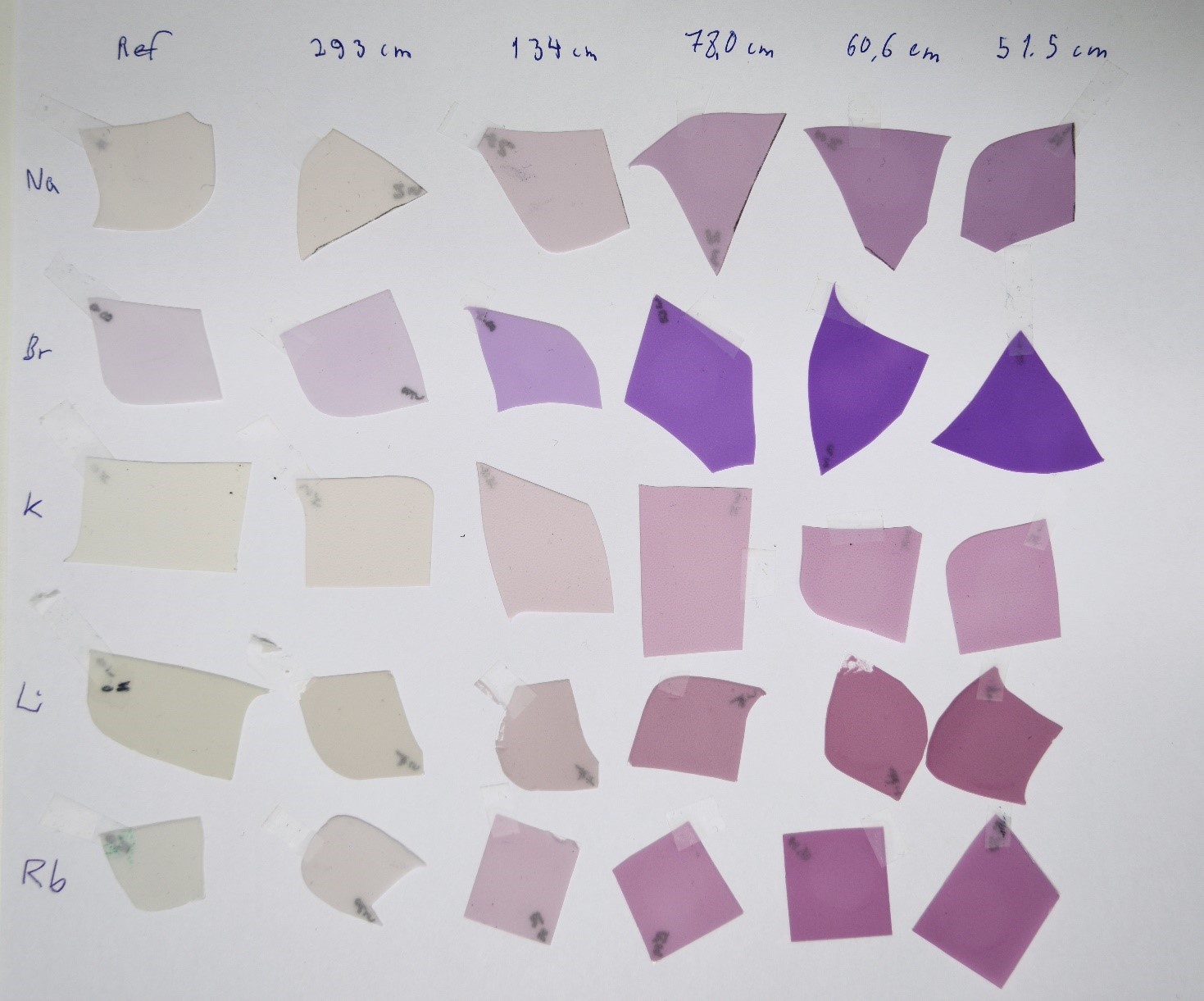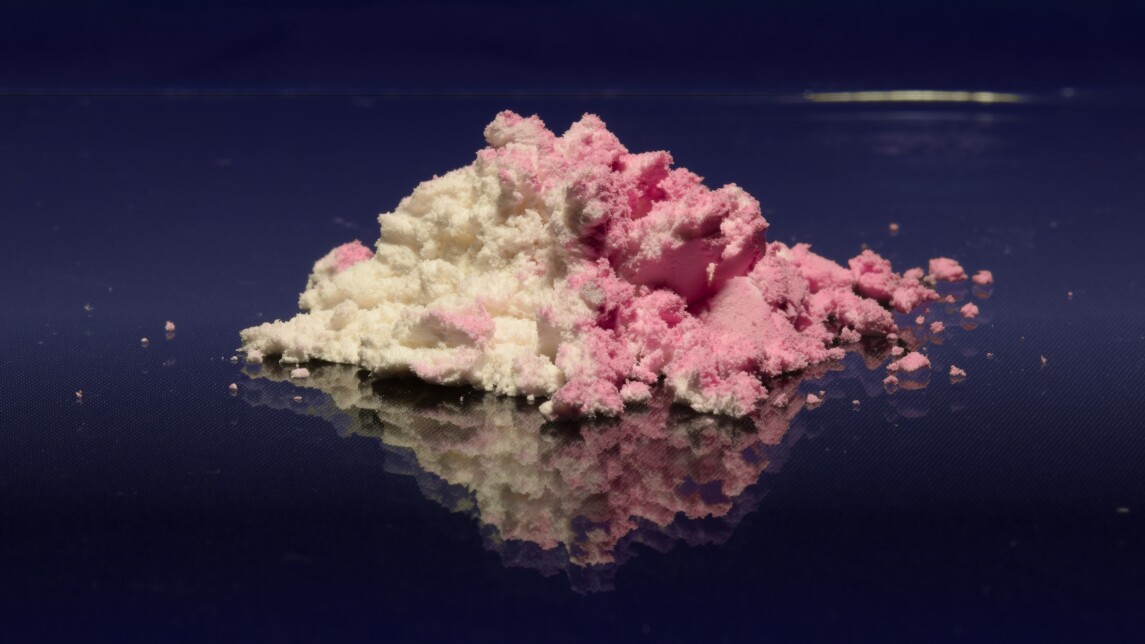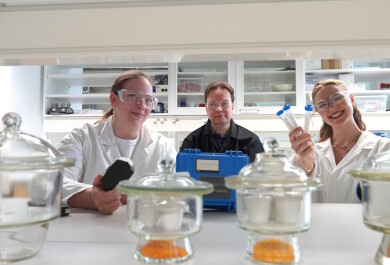Researchers at the University of Turku, Finland, have long studied the colour-changing properties of the natural mineral hackmanite upon exposure to UV radiation or X-rays. Now, the research group studied the reactions of synthetic hackmanite to nuclear radiation. The researchers discovered a one-of-a-kind and novel intelligent quality, gamma exposure memory, which allows the use of hackmanite as e.g. radiation detector.
A research group at the University of Turku, Finland, has studied the unique natural mineral hackmanite and its properties for years. They have developed a method of synthesising hackmanite and created numerous applications utilising the material’s colour-changing and luminescence properties. At the moment, the group is for example developing a hackmanite-based non-electronic UV radiation dosimeter, which will be tested at the International Space Station. Radiation exposure in space can be measured by observing hackmanite’s changing colour from white to pink caused by UV radiation.
The researchers have now also investigated how the synthetic hackmanite reacts when exposed to alpha particles, beta particles (positrons) or gamma radiation. They discovered that hackmanite changes colour from exposure to these radiation types, too, which means that it is also a radiochromic material. This was previously unknown.
The impact of the radiation was studied in the laboratory of Swedish partners in Umeå, the laboratory of the Finnish Radiation and Nuclear Safety Authority, and the radiochemistry laboratory of the University of Turku by placing hackmanite plates at different distances from radiation sources for varying periods of time, which exposed them to different doses of radiation.
“After that, the samples were photographed and their reflectance spectra were measured to provide information about their colour depth and whether the colouring was similar to samples exposed to e.g. UV light and X-rays. The colour change upon exposure to nuclear radiation was very similar to UV radiation and X-ray exposures, but slower, due to most of this radiation passing through the material without impacting it,” says Doctoral Researcher Sami Vuori.
The colour-changing in hackmanite is similar in all radiation exposures, but there was a slight difference in the spectra of the samples exposed to nuclear radiation. According to the researchers, this was the key in discovering a new feature.

Researchers discovered new intelligent property – gamma exposure memory enables hackmanite-based non-toxic radiation detectors
The researchers noticed that hackmanite that had been coloured using nuclear radiation can be reverted to its original colour similarly to that exposed to UV radiation and X-rays, i.e. by heating the material or exposing it to white light.
“We noticed that hackmanite will however preserve a memory trace of the exposure to high-energy radiation such as alpha particles or gamma radiation. The memory trace will remain even when the colour is changed back to the original. It becomes visible when the sample is coloured again using a UV lamp. To the naked eye, the colour is similar to the material exposed to UV radiation or X-rays, but spectrometry reveals a small but distinct change in the shape of the signal,” says the leader of the research group, Professor Mika Lastusaari.
With computational results, the researchers could verify that nuclear radiation creates a new type of structural defect in hackmanite. This defect acts as a certain type of memory unit in the material. The radiation does not destroy the hackmanite, but offers a new type of intelligent function, gamma exposure memory, which according to the researchers has not been detected in any other material. Despite the gamma exposure memory and the structural defect, one of the basic intelligent properties of hackmanite, the ability to change colour repeatedly, remains the same.
“The colour-changing upon nuclear radiation means that hackmanite can be used to create radiochromic films regularly used in different applications of medical physics to measure radiation doses and map dose distribution. The current radiochromic films are usually manufactured from polydiacetylenes or leucomalachite green and are either non-reusable or toxic. Hackmanites offer a non-toxic option which can be used repeatedly. Moreover, hackmanite has a memory property that other materials lack. Hackmanite is also an ecological and inexpensive material that is easy to synthesise,” says Lastusaari.
The study was conducted by the Intelligent Materials Research Group, radiochemistry research group, and Department of Physics of the University of Turku, and the computations were done at University Claude Bernard Lyon 1, France. The international research consortium also comprised the Mineralogical Society of Antwerp, Belgium, the Universities of Tampere and Jyväskylä, Finland, and the Swedish Defence Research Agency.
The study was published in September in the esteemed journal Materials Horizons: https://doi.org/10.1039/D2MH00593J.




